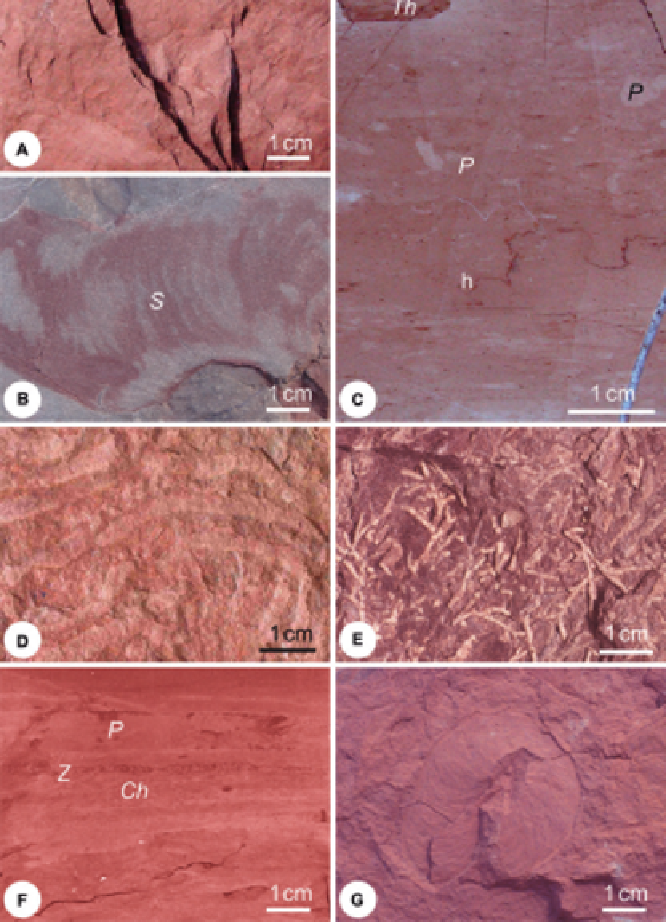Environmental Engineering Reference
In-Depth Information
FIGURE 5
Bioturbation in highly oxic deposits not preserving organic matter; the small size of the
burrows and the vertically only little extended bioturbated zone imply restricted food availability (for
details, see text). (A) Slates without any evident trace fossils (Variegated Shale). (B)
Scolicia
(
S
); the
coloration of the sediment suggests burn-down of organicmatter while animals irrigated the sediment
(Variegated Shale, Late Paleocene-Early Eocene, Słopnice, Carpathians, Poland). (C) Red limestone
showing only a few trace fossils, although completely bioturbated (Upper Cretaceous, near Montbo-
von, Switzerland). (D)
Nereites
(Variegated Shale, Late Paleocene-Early Eocene, Carpathians,
Lubomierz, Poland). (E)
Chondrites
(Variegated Shale, Late Paleocene-Early Eocene, Carpathians,
Lubomierz, Poland). (F) ODP Site 718C (30
50.4
0
N, 67
38.9
0
W, 5,124 m water depth, core 64X2,
145-150 cm); note the small size of the traces. (G)
Zoophycos
(Couches rouges, LateCretaceous, near
Montbovon, Switzerland). h, homogeneous;
Ch
,
Chondrites
;
P
,
Planolites
;
S
,
Scolicia
;
Th
,
Thalas-
sinoides
;
Z
,
Zoophycos
.

Search WWH ::

Custom Search